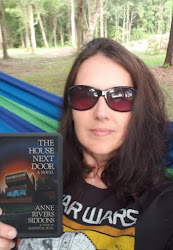I am excited to welcome M.J. Rose back to Book Den today!
All writers have rites and rituals that we've developed over the years. Habits and idiosyncrasies. Some I’ve developed for myself – some I learned from other authors.
I start by reading non-fiction about the period I’m writing about. Usually I’ve read a few dozen books and spent hundreds of hours doing research in person or on line.
And then I need to find three things.
The first is a question I don't know the answer to but find interesting enough to spend at least a year finding out.
The second is a quote that captures the spirit of the theme I want to write about — what I think powers the novel.
And the third is to find an object that belongs to my main character — that has some meaning to him or her — even if I don't always know quite what that meaning is when I begin.
The question that inspired this book was: Who owns art? Should the cultural heritage of a piece of artwork determine what museum it finally winds up in? Is restitution always in the best interest of the pubic?
For years I've been reading about Greece's efforts to get the Elgin Marbles back to their homeland. I can see both sides of the arguments. I have sympathy for countries whose riches have been taken from them. But at the same time I've spent a lot of my life visiting museums. I've been moved and inspired by work gathered from around the world and can't imagine what these amazing institutions would be like if they were stripped of their treasures.
The quote that mesmerized me and epitomized what I wanted this book to be about was:
Often, in the cosseted quarters of a museum, we forget that every work of ancient art is a survivor, a representative of untold numbers of similar artworks that perished. This triumphant exhibition makes us remember, while demonstrating that every survivor saves much more than just itself: long strands of culture, identity and history waiting to be woven back together. —Roberta Smith writing in the New York Times about the exhibit Silent Survivors of Afghanistan's 4,000 Tumultuous Years
And the magical object, the talisman that belongs to my main character, is a broken pencil. It was in Lucian Glass's pocket the day he was brutally attacked and killed. He was only 20 at the time, a student at college. Glass has kept the pencil in a drawer that he opens all the time... he's seen it so often that he no longer notices it. Until the day my novel starts... and he's forced into remembering something he never really could forget.
Book Den is a stop on M.J. Rose's blog tour for The Hypnotist. [Read my review of The Hypnotist.] You can find the schedule of tour stops by visiting The Hypnotist Virtual Book Tour Schedule.
Thursday, November 17, 2011
Subscribe to:
Post Comments (Atom)











Great post. That sounds like a wonderful way to develop and learn more about your story. The Hypnotist sounds interesting and I might have to read it sometime!
ReplyDeleteGreat post! I think those three items are indeed very important in finding the motivation to write a whole book - the hours of research, polishing, editing... It makes the actual writing look like a piece of cake!
ReplyDeleteI'd always gone for an scene, an image that put me through some powerful emotion, and then built the whole story around. I think that's a bit like the quote here. I love the significant object plan, too - I think I'm going to try and use it!
Thanks so much for sharing your thoughts,
Ron @ Stories of my life
Very detailed! Somewhat similar to an object or a scene, I base my stories around a "What if..." statement - like my IH series, "What if a shady genetics company secretly tested on infants and they gained superpowers during puberty?" :)
ReplyDeleteThanks for sharing!
Great post, M.J. and Jennifer!
ReplyDelete